While e-bikes have remained a small market for many years, they are now in full expansion and are becoming more and more appealing to various cyclists.
Manufacturers now produce bikes with electric assistance in all styles, such as urban bikes, road bikes, mountain bikes and all-purpose commuters. Whether you want to commute to work in a more efficient way, or ride longer and stronger on the road or in the trail, there’s now an e-bike for your needs.
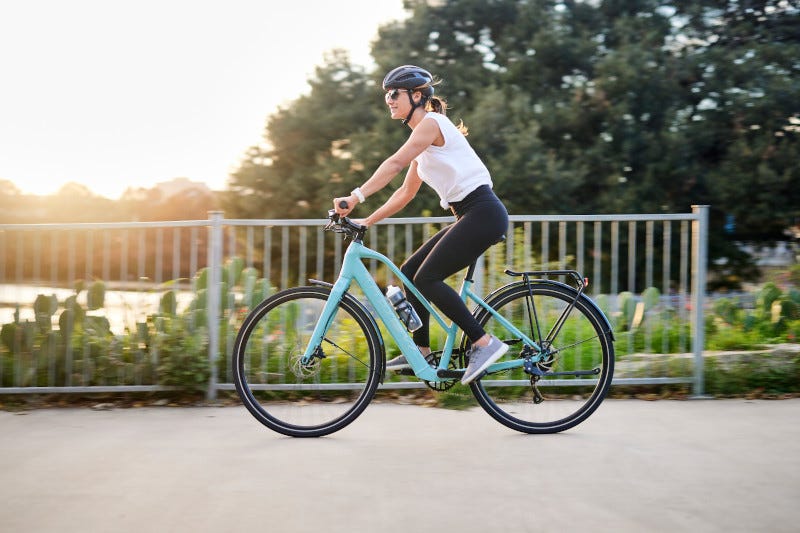

How do E-bikes work?
An e-bike uses a motor and a battery in order to assist cyclists when pedaling. A control interface is located on the handlebar allowing you to select the level of power assistance you want. E-bikes have a regulated max speed of 32 km/h.
Motors can be housed in the back wheel (hub motor) or in the bottom bracket for better integration (mid-drive motors). Mid-drive motors offer a much smoother power delivery and a lower center of gravity which improves bike handling greatly.
With integration as a priority on most models, manufacturers these days choose to place the battery in the downtube of the frame for a more polished look and better weight distribution. Some bikes still have an external battery placed on the downtube or on a rear rack.
E-bikes also come with reinforced parts and accessories to support the greater weight of the motor and battery. Wheels are more robust with more spokes and a more resistant rim, while tires are wider with a better puncture protection. The frame will also be optimised and reinforced in order to provide great weight distribution and part integration.
Most motors are made by Bosch and Shimano.
What is the battery life of E-bikes?
The battery life of an e-bike will be drastically affected by the way it is used. Most bikes can give you 75 to 180 kilometers on a single charge, and most batteries will last for around 1000 charge cycles, but terrain, wind, weight and temperature will have an incidence on the rate at which the battery will drain. More powerful batteries are usually found on mountain bikes to provide more range to the more powerful motors that have to be used.
Because battery range can vary wildly, Bosch has this nifty tool to help you get a sense of what to expect according to different batteries, motors and riding conditions, check it out here.
Charging time is usually around 4 to 5 hours when the battery is flat, for most batteries. Charging time differs between brands as well.
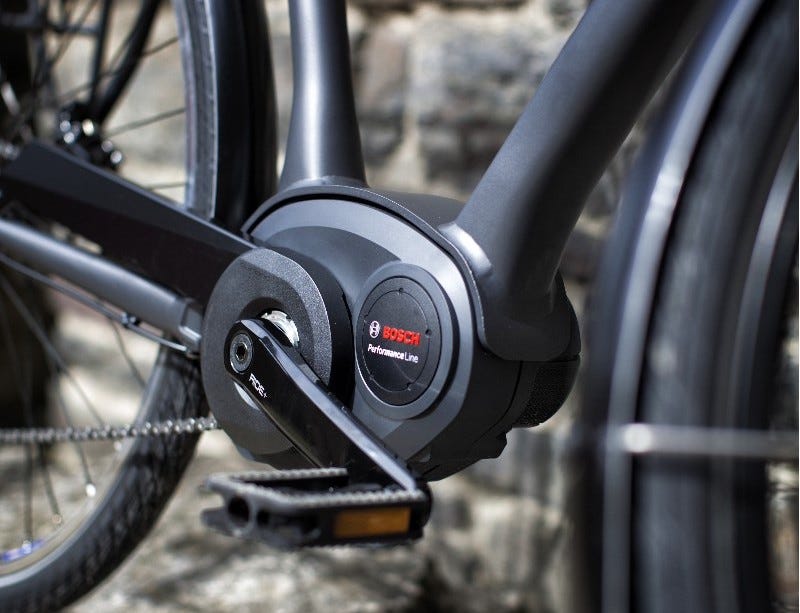

A mid-drive Bosch motor
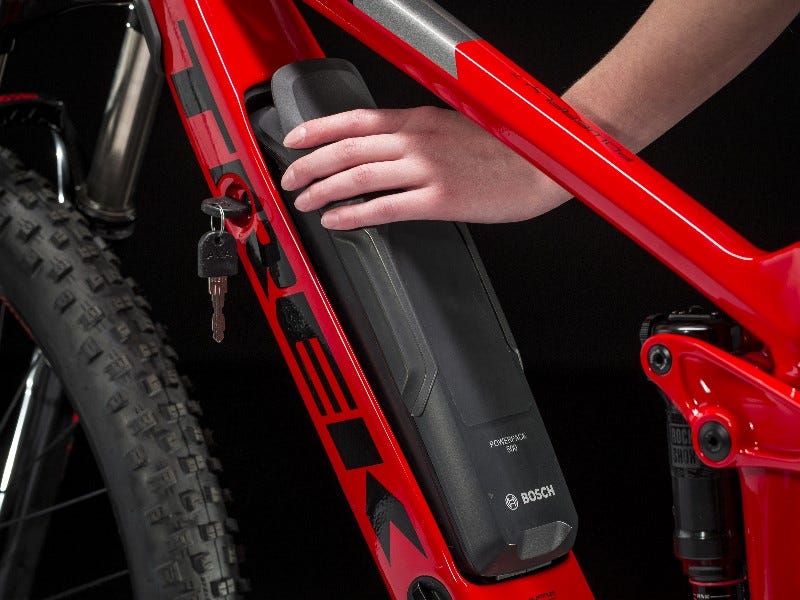

An integrated battery
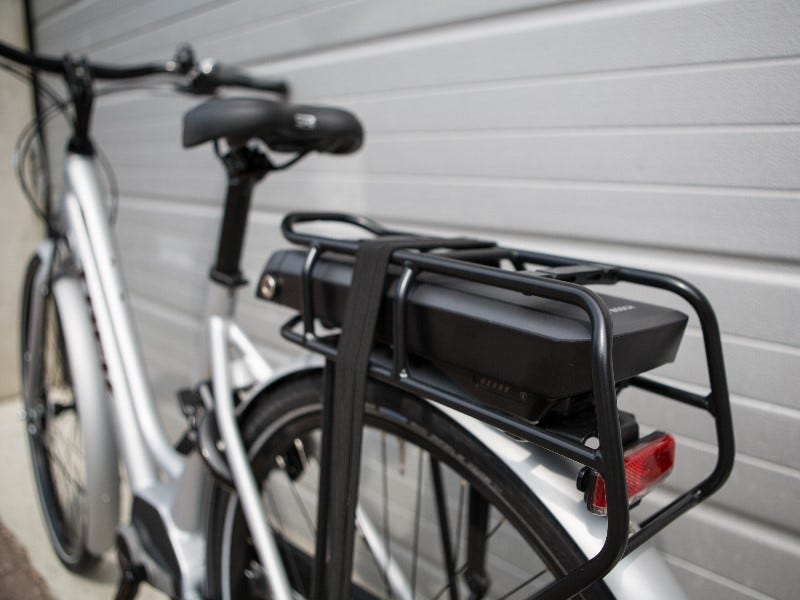

A rear mounted battery
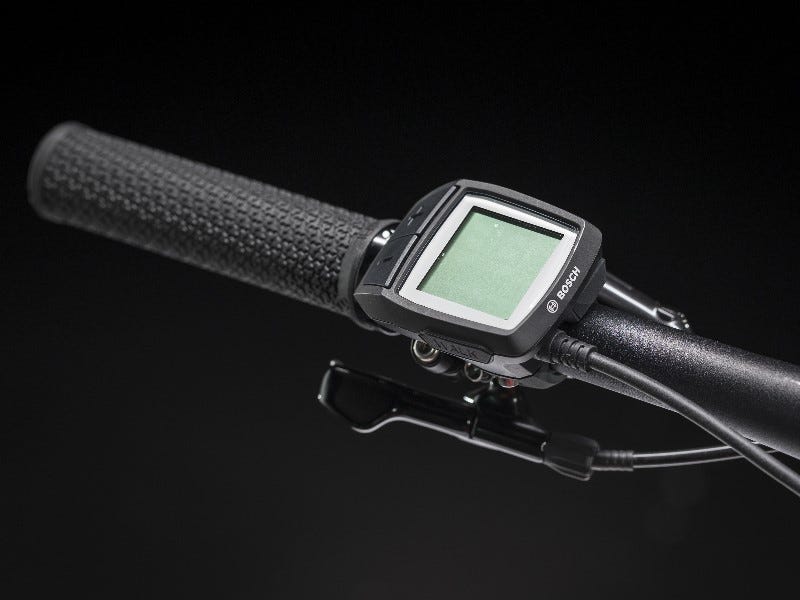

A control unit for electric assistance
What are the different types of E-bikes?
Urban and hybrid e-bikes
Urban and hybrid bikes with electric assistance are best suited to casual riders and commuters. They use frames with geometries that emphasise comfort and all-day fun. With electric assistance, you can now ride longer and not have to worry about hills or windy conditions.
Bikes such as the Electra Townie provide a super comfortable seating position as well as ease of use. If you’re looking for a great e-bike for Sunday rides, definitely check them out.
Commuters can also benefit from electric assistance by being able to cover greater distances to get to work without having to change clothes after their ride. Usually, e-bikes with commuting in mind will offer a sportier fit in order to increase efficiency. Bikes such as the Trek FX+, Cannondale Tesoro Neo X 3 and Cube Touring One 500 are perfectly adapted for fun commuting.
Road E-bikes
As the demand for road e-bikes increases, so does the manufacturers' offer. To own such a bike enables you to go for longer rides that would otherwise tire you too much and to tackle the climbs with ease. Thanks to the electric assistance which can be adjusted according to your needs, you will be able to follow the group and to get home less tired at the end of the day. The large manufacturers like Trek and Cube offer high end road e-bikes that will make you feel as light and fast as the wind.
Electric road bikes feature the geometry as those without electric assistance, which renders them very aerodynamic efficient. Bikes like the Trek Domane+ and the Devinci E-Hatchet E6100 are versatile and feature a sleek design with a motor to help you get up those hills and home at the end of a long day. Let yourself be tempted by their remarkable technologies, lightweight builds and fast, yet comfortable geometry.


Mountain E-bikes
Electric mountain bikes are perfect for trail riders looking to cover a lot of difficult terrain and still have enough gas to keep up with their friends. They function the same way as traditional hardtail or full-suspension bikes, but with an extra electric kick. Motors designed for electric mountain bikes, or E-MTBs, are typically more powerful, able to produce a higher torque rating which is need to get over short steep hills typically found in MTB terrain.
Once again, some models are designed to closely replicate the feeling of a traditional mountain bike such as the Trek Fuel EXe series with its lightweight carbon frame and compact battery, whereas others have a high capacity battery for long days in the trail, such as the Trek Rail, Cube Steroe Hybrid ONE44 and Cannondale Moterra Neo 3S.
To learn more on how to choose your mountain bike, check out our Mountain Bike Buying Guide.
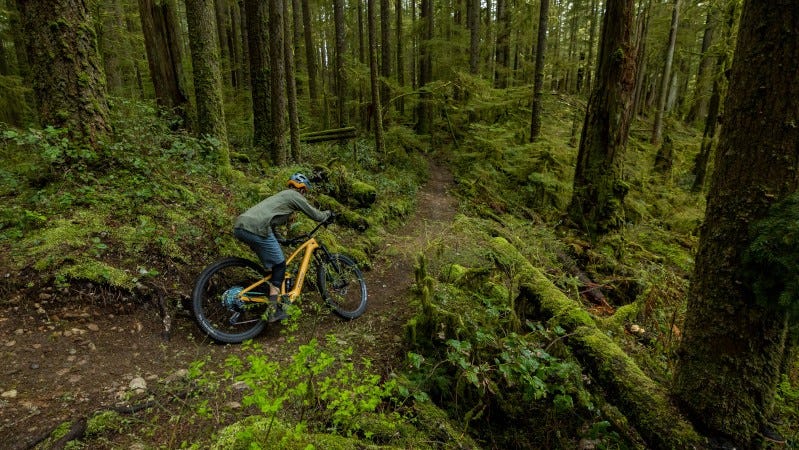

Primeau Vélo is the #1 destination for e-bikes in Canada. Check out our full selection of electric road, hybrid and mountain e-bikes for, available in one of our multiple bike shops.













